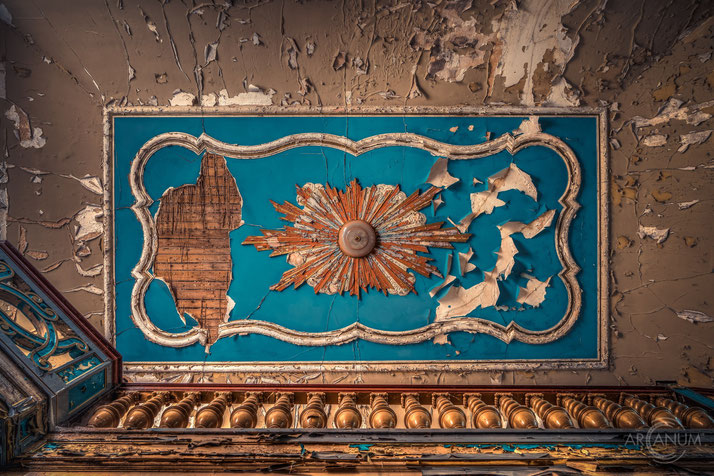Knight's Manor "Blue Sky"
A bit hidden outside of town, the manor's predecessor was probably on the site until the late 19th century. At the time, it was completely taken over by the local porcelain factory. No wonder, because the owner family of the manor are named as the founders of the porcelain factory around 1811 as well. The factory itself was in operation until 1991 and in the days of the GDR mainly produced porcelain services for export. In 1895, a regional weaving mill owner acquired the estate and had a magnificent and comfortable manor house built on it. The old term "knight's estate" was transferred to this completely new building.
The remaining area next to the porcelain factory was sold to other interested parties. Through various acquisitions and settlements with other owners, an approximately 100-hectare complex of forest and fields was created around the new manor house. The weaving mill owner died in 1915 and the "knight's estate" was acquired by another industrialist. He realized his vision of a luxury park with various stone pedestals and sculptures. Walking paths were created, rare trees were planted, and a tea house with antique style elements was built. After the First World War, he sold the entire manor including the park due to lack of money.
From now on, things became more complicated, because all following owners as well as the subsequent trust administration were plagued by financial difficulties. First parts of the property fell into disrepair as early as World War II.
Plans had been made in 1937 to convert the manor house into a convalescent home for mothers. These plans were implemented in 1939 with some changes. Instead of the convalescent home, the house now served as a labor camp for young women.
With the end of the World War, the manor got new residents again. Resettlers from Silesia and the "Sudetenland" moved in and farmed the fields and forests that had been divided following the land reform.
The mansion itself served as a military hospital for the Red Army. From now on, however, the park itself was no longer part of it. The municipality bought it in order to build a new public pool in the middle of the large meadow and the tea house by redesigning the park pond. The new pool opened in 1948 and offered guests diving platforms up to 5m. From the tea house to the park to the jumping pit, the area was appreciated by the people and became a popular recreation spot.
Over the following decades, the manor house was used in completely different ways, first as a school for the training judges, then as a school for the travel agency of the FDJ (Freie Deutsche Jugend) and later as a school for pioneer leaders.
Use of the manor house seized with the reunification in 1991, and the entire former manor site was managed in trust. In 2009, investors searched in vain for investors who would fill both the manor house and the outdoor pool and park with new life.
But instead of new life, only flames were raging. On a Friday in August of 2018 at 7.15 p.m., the fire brigade had to rush to the manor, the roof structure of which was completely on fire and almost completely burned down.
At that time, the police assumed it was arson, but could not say whether it was intentional or negligent. The manor house was saved and secured thanks to the rapid deployment of the rescue services. The roof and the top floor however are almost completely destroyed.

































